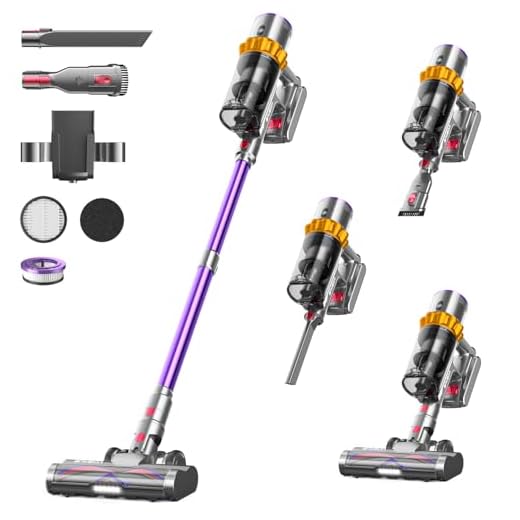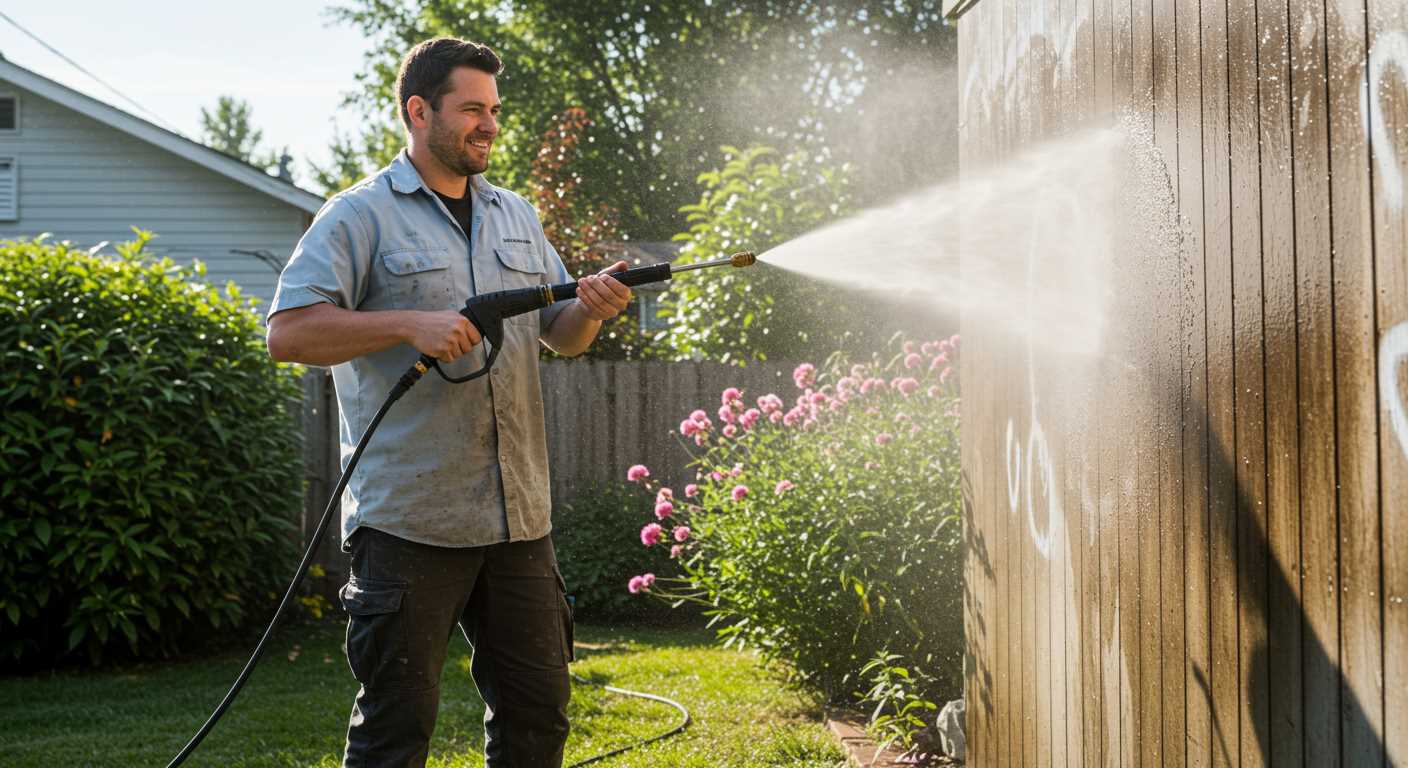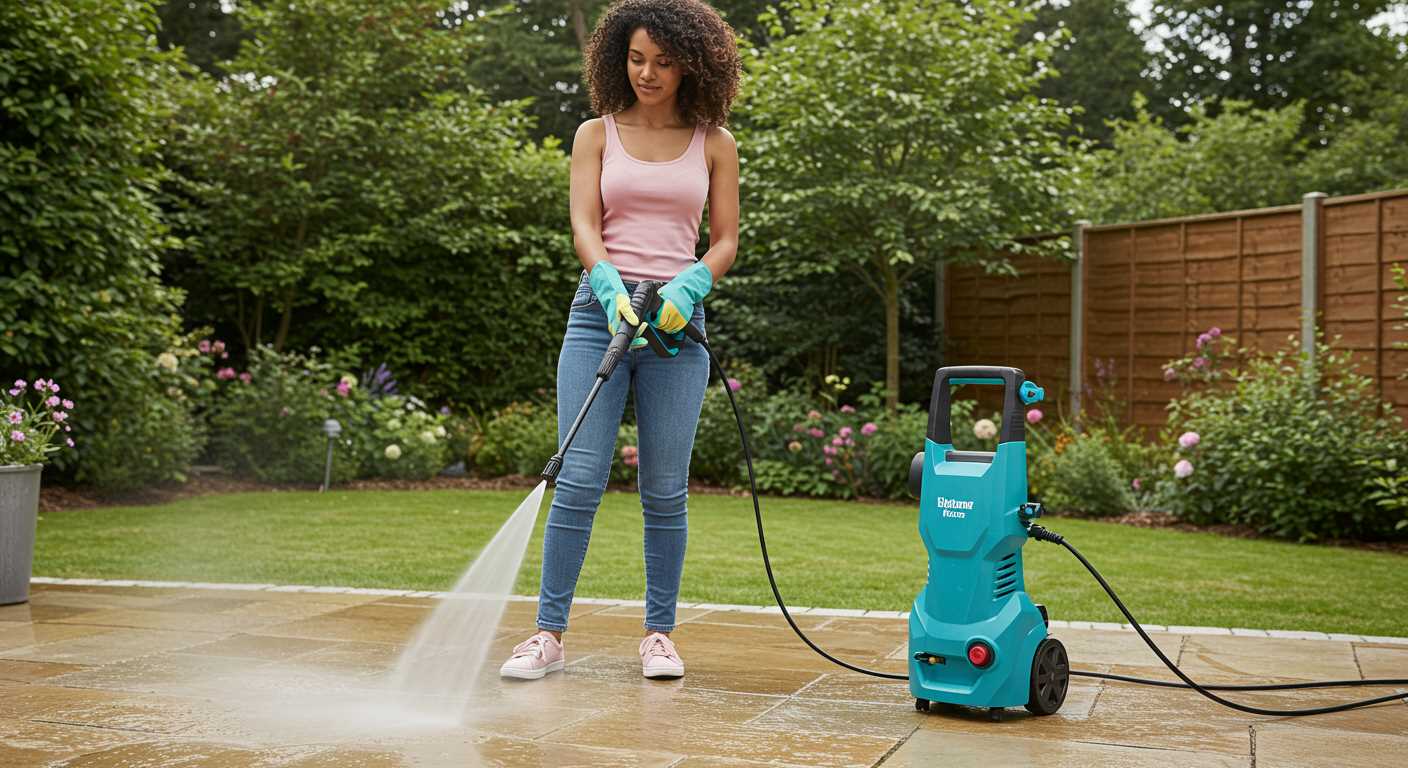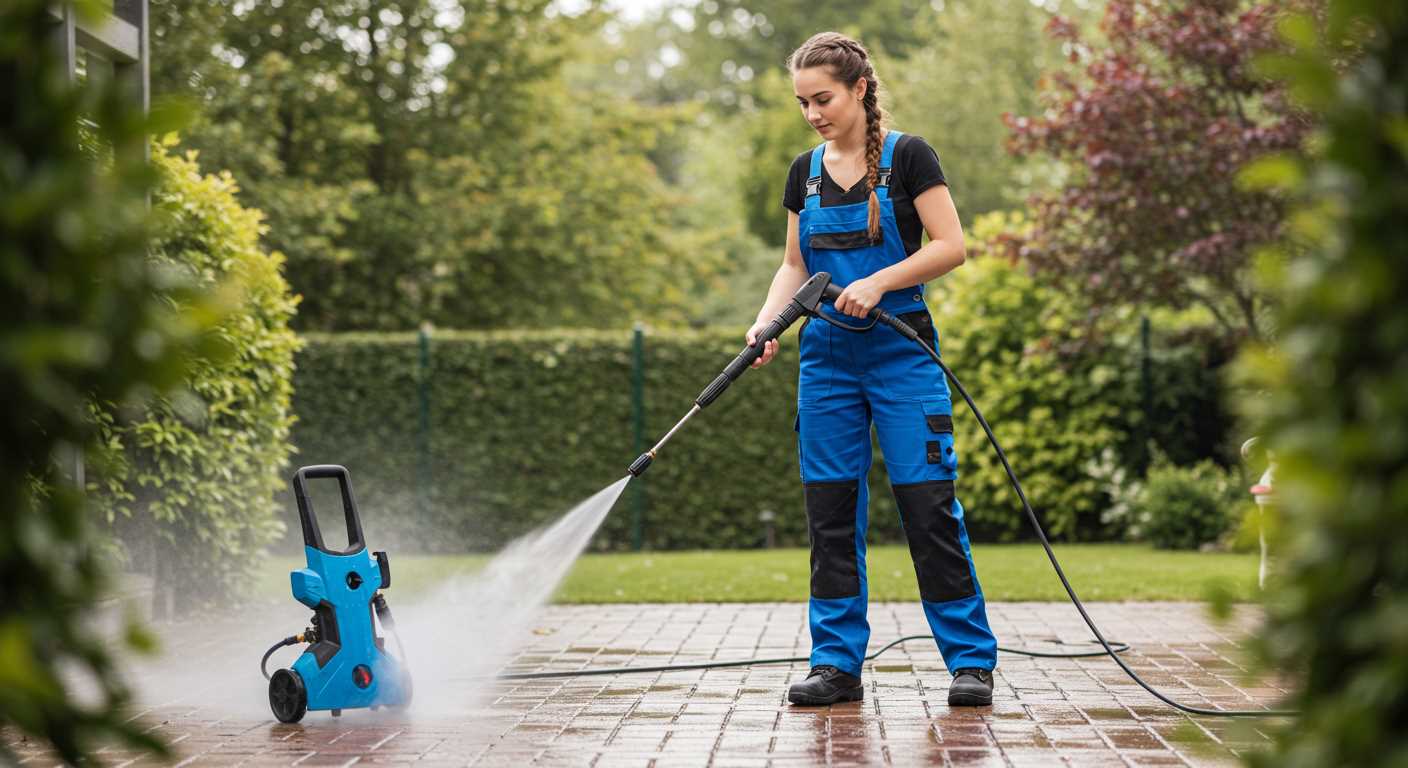



Evaluating the effectiveness of high-pressure gear for stripping coatings, I’ve consistently found it to be a viable solution, particularly for exterior surfaces. This method excels when dealing with old, peeling layers–translating to a substantial reduction in labour time compared to traditional methods like scraping or sanding.
Optimal pressure settings are crucial; typically, a range between 2000 to 3000 PSI offers the best results without damaging underlying materials. Always start with the lowest pressure and gradually increase, ensuring control and precision throughout the process. Pairing the right nozzle–preferably a 25-degree or 40-degree tip–enhances the process, providing a broader spray pattern that minimises the risk of surface damage.
Preparation remains key for success. Prior to applying high-pressure techniques, ensure to protect surrounding areas from overspray. Additionally, thorough testing on an inconspicuous section can help gauge effectiveness and necessary adjustments. With careful handling, utilising high-pressure equipment transforms the often laborious undertaking of coat stripping into a swift and efficient task.
Choosing the right equipment for paint stripping
For effective paint stripping, I recommend high-pressure units with minimum ratings of 2000 PSI and 2.5 GPM. Look for models equipped with adjustable nozzles to control water flow and pressure, which enable precision when tackling delicate surfaces. A turbo nozzle can also enhance cleaning by concentrating the water stream while increasing force.
Consider the weight and portability of the device. A heavier model may provide better stability, but if manoeuvrability is compromised, lean towards lighter alternatives if your project requires frequent repositioning. Electric alternatives work well for smaller jobs but remember that gas-operated versions generally have more power for larger surfaces.
Check for compatibility with various cleaning agents. Some formulations make paint softening easier, allowing for more efficient results. Furthermore, a detachable spray gun and flexible hose enhance reach and convenience during operation.
A sturdy build is crucial; look for corrosion-resistant materials. Storage options such as onboard hose reels simplify maintenance and transport. Lastly, user-friendly controls and safety features, like automatic shut-off, are invaluable for any level of expertise.
Preparing the surface before using a pressure washer
Thorough preparation of the surface is critical for optimal results. First, clear the area of debris, furniture, and any obstacles that may hinder access.
- Remove any loose items around the worksite, including planters, decorations, and tools.
- Inspect the surface closely for cracks, chips, or areas of concern that may require patching prior to cleaning.
Next, ensure that the area is free from mould or mildew. A cleaning solution specifically designed for this purpose can be applied to treat affected spots before the high-pressure cleaning begins. Allow this solution to sit for the recommended time.
For wooden surfaces, it’s advisable to check for splinters or soft spots. Sanding down rough edges or weak areas will help achieve a smoother finish post-cleaning.
- Wear protective gear, including gloves and goggles, to ensure safety while working.
- Cover any nearby plants with tarps or plastic sheeting to protect them from cleaning solutions and excessive spray.
Ensure that all windows and doors are securely shut to prevent contaminants from entering. Checking for any electrical outlets or equipment nearby is also necessary; they should be protected from water exposure.
Lastly, establish a clear plan for which sections will be tackled first. This strategic approach minimises the risk of missing spots and ensures uniformity across the surface.
Best techniques for using a pressure cleaner on painted surfaces

Begin with the appropriate nozzle. A fan tip nozzle typically works best for this task, allowing for a wider spray that reduces the risk of damaging the underlying surface while effectively breaking up the coating. Start with a wide angle and adjust to a narrower focus only if necessary.
Adjusting the pressure

Set the machine to a lower pressure setting initially, ideally below 1500 PSI. This adjustment minimises the likelihood of stripping away the substrate beneath the existing layer. Gradually increase the pressure if the initial attempts do not yield results, maintaining a safe distance of approximately 12 to 18 inches from the surface.
Technique and movement
Utilise a sweeping motion while working, keeping the nozzle moving consistently to avoid concentrated areas of force that could gouge the surface. Work in sections, starting from the top and moving downwards, allowing the debris to fall away from the area already treated. Take breaks to check the progress and make adjustments as necessary.
Incorporating a cleaning solution specifically designed for surface preparation can enhance the process. Allow it to dwell for the recommended time before rinsing. After completion, thoroughly rinse the area to ensure no residual cleaning agents remain, which could interfere with future applications.
Safety precautions when washing away coatings
Always wear personal protective equipment including safety goggles, gloves, and a mask to shield against flying debris and harmful substances. Appropriate clothing should cover all skin areas to avoid potential injuries from high-pressure streams.
Before starting, inspect the surroundings for nearby objects, flammable materials, or electrical outlets, which can pose risks. Ensure the area is well-ventilated, especially if dealing with toxic materials underneath layers.
Maintain a secure footing while operating. Stay stable and avoid working on overly slippery surfaces. Consider using scaffolding or ladders if elevated areas are involved, ensuring they are secure and rated for your weight.
Be attentive to the pressure settings, particularly on delicate surfaces. Opt for lower settings to minimise damage, and keep the nozzle at a safe distance to avoid unwanted harm to underlying materials.
Regularly check and maintain equipment, as faulty tools can malfunction and cause injury. Ensure hoses are free of cracks and leaks, and that all connections are secure before commencing work.
Finally, always review and follow the manufacturer’s guidelines and local regulations regarding waste disposal, especially when dealing with hazardous materials like lead-based coatings.
Post-wash cleaning and maintenance tips

Immediately after completing the task, it’s crucial to clean the equipment thoroughly to maintain performance and longevity. Rinse off any residual substances using clean water to prevent clogging and deterioration. Make sure to detach all accessories and wash them separately.
Surface Care
Once the surface treatment is done, inspect it for any remaining blemishes. If necessary, apply a gentle solvent to tackle stubborn areas. After this, rinsing the surface again ensures no cleaning agents remain, which could interfere with future coatings or treatments.
Equipment Maintenance
Regular upkeep of the cleaning device includes checking hoses for leaks and ensuring no obstructions in the nozzle. If any wear and tear is noticeable, consider replacing parts to avoid diminished efficiency.
| Task | Frequency | Notes |
|---|---|---|
| Inspect hoses | After each use | Look for cracks or leaks |
| Clean nozzles | After each use | Prevent clogging |
| Flush system | Weekly | Remove any build-up |
| Lubricate connections | Monthly | Ensure smooth operation |
| Store properly | Off-season | Keep in a dry location |
Following these post-use guidelines will enhance the longevity of the tool and ensure optimal performance for future projects. Effective maintenance translates to fewer repairs and a better experience overall.
Alternative methods for paint removal if pressure washing fails
If high-pressure cleaning is ineffective, consider chemical strippers. These products penetrate and dissolve the coating, making it easier to scrape off. Opt for eco-friendly formulations to minimise environmental impact.
Sanding
Using a sander can be an effective technique for stubborn coatings. Start with coarse-grit sandpaper to remove the majority of the layer, then switch to a finer grit for a smooth finish. Ensure proper ventilation, especially with power sanders, to avoid inhaling dust.
Heat Guns
Heat guns can soften the coating, allowing for easier scraping. Carefully move the gun back and forth to prevent burning the substrate. Use a scraper alongside the heat to lift the softened material effectively.
In cases of intricate surfaces, consider using a scraper or a putty knife designed for delicate work. A detail sander can assist in reaching tight areas where other methods may fall short.
Always wear appropriate personal protective equipment, such as gloves and eyewear, regardless of the method chosen. Testing any product or technique on a small area first will help assess the impact on the underlying material.







